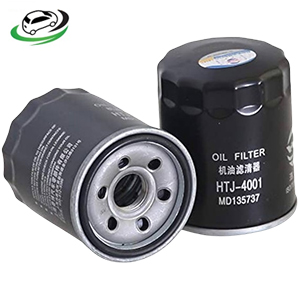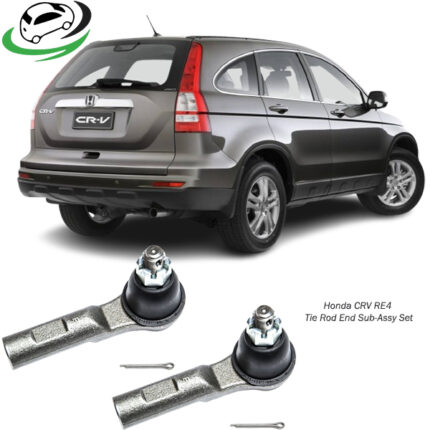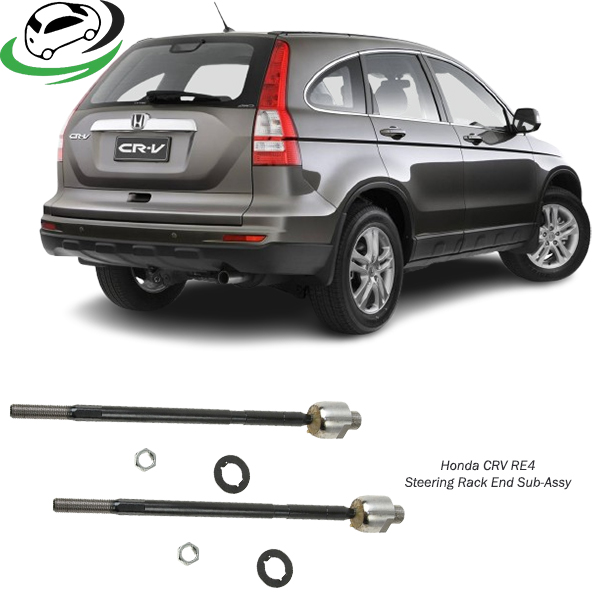-14%
Get Honda CRV RE4 Steering Rack End Sub Assy SRH020 in Kenya
The steering rack end sub-assembly, often simply called the “rack end,” is a critical component of a vehicle’s steering system. It connects the steering rack to the tie rods, which in turn transfer movement to the wheels, allowing precise steering control. Understanding the function, types, benefits, common issues, maintenance, and replacement process of the steering rack end sub-assembly is essential for anyone interested in vehicle mechanics or wanting to keep their vehicle’s steering system in top shape.
1. Function and Importance of the Steering Rack End Sub Assembly
The steering rack end sub-assembly plays a significant role in converting the driver’s steering input into actual movement of the wheels. Here’s a breakdown of its core functions:
- Linking Steering Rack to the Wheels: The steering rack end sub-assembly connects the rack-and-pinion steering mechanism to the tie rods, which are attached to the wheels. When the driver turns the steering wheel, the rack end translates this motion through the tie rods, steering the wheels accordingly.
- Transmitting Steering Forces: The rack end absorbs and transmits the forces created by steering and road impact. It ensures that these forces are controlled, resulting in smooth and responsive steering without excessive vibration.
- Adjusting to Vertical Movement: As the wheels encounter bumps or dips in the road, the steering rack end sub-assembly accommodates the vertical movement, allowing the wheels to adapt to the road surface without losing alignment.
In short, the rack end sub-assembly is essential for maintaining stable, responsive steering and ensuring the vehicle handles well on various road conditions.
2. Types of Steering Rack End Sub Assemblies
The steering rack end sub-assembly varies based on the vehicle’s steering mechanism. Here are the main types:
- Standard Rack End Assembly: Used in most passenger cars, this standard type provides reliable connection and steering force transmission. It includes basic parts like the inner and outer tie rods.
- Heavy-Duty Rack End Assembly: Commonly used in trucks and off-road vehicles, this type is reinforced to withstand greater stress and heavier loads, providing more durability for rugged driving conditions.
- Adjustable Rack Ends: Adjustable rack ends are used in performance and modified vehicles. They allow for changes in steering geometry, which can be useful in motorsports or for specific handling preferences.
Each type is designed with particular use cases in mind, balancing durability, flexibility, and steering precision to meet different driving needs.
3. Benefits of Steering Rack End Sub Assemblies
The steering rack end sub-assembly contributes significantly to a vehicle’s overall performance. Here are some key benefits:
- Improved Steering Precision: The rack end sub-assembly translates steering wheel inputs accurately, enhancing the vehicle’s steering responsiveness. This is crucial for navigating tight turns, city streets, or highways.
- Enhanced Stability and Safety: By maintaining alignment and transmitting forces from the steering rack to the wheels, the rack end sub-assembly provides stability even on uneven surfaces, enhancing overall safety.
- Reduced Tire Wear: Properly functioning rack end assemblies help maintain wheel alignment. This alignment prevents excessive or uneven tire wear, saving costs on tire replacements.
- Smoother Ride Quality: The rack end absorbs minor shocks and vibrations from the road, contributing to a smoother and more comfortable ride.
- Longevity of Steering Components: The rack end sub-assembly distributes stress across the steering system, reducing wear on other components like the steering rack and tie rods, which extends the overall lifespan of the steering system.
These benefits highlight the rack end sub-assembly’s critical role in both the handling and longevity of a vehicle’s steering system.
4. Signs of a Worn or Damaged Steering Rack End Sub Assembly
Like any automotive part, the rack end sub-assembly is subject to wear and tear, especially from constant use or harsh driving conditions. Here are common signs that indicate wear or damage:
- Loose or Unresponsive Steering: If the steering feels looser than usual or doesn’t respond immediately, this could indicate a problem with the rack end sub-assembly.
- Clunking or Knocking Noise: A worn or damaged rack end may produce clunking noises when turning or driving over bumps. This is often due to play in the connection between the rack end and tie rods.
- Excessive Vibration in the Steering Wheel: If you notice unusual vibrations in the steering wheel, especially when driving over rough surfaces, this could indicate a failing rack end assembly.
- Uneven Tire Wear: When the rack end sub-assembly wears out, it can affect wheel alignment, causing tires to wear unevenly. Uneven tire wear is often a sign that the steering components need inspection.
- Wandering or Drifting: If the vehicle tends to drift to one side without steering input, this could be due to a faulty rack end that no longer maintains alignment.
Recognizing these symptoms early can help you avoid further damage and potential safety issues, as a compromised steering system can lead to unsafe driving conditions.
5. Common Issues with Steering Rack End Sub Assemblies
Several issues can arise with the steering rack end sub-assembly due to wear, driving habits, or environmental factors. Common issues include:
- Wear and Tear: Over time, the bushings and joints within the rack end wear down, leading to a decrease in performance and increased looseness in the steering system.
- Corrosion and Rust: Exposure to moisture and salt, especially in colder climates, can cause rusting of the metal parts in the rack end, compromising its structural integrity.
- Loss of Lubrication: The inner joint of the rack end is lubricated to reduce friction. If the grease deteriorates or leaks, it can cause increased friction, wear, and even overheating of the joint.
- Misalignment: Hitting curbs, potholes, or other obstacles can knock the rack end out of alignment, leading to uneven tire wear and steering problems.
- Damage from Impact: Off-roading or driving on rough terrain can stress the rack end, leading to bending or other structural damage.
Understanding these issues allows for proactive maintenance and helps prevent costly repairs.
6. Maintenance Tips for Steering Rack End Sub Assemblies
Proper maintenance can prolong the life of a steering rack end sub-assembly, ensuring safe and responsive handling. Here are some tips:
- Inspect Regularly: During routine servicing, inspect the rack end for wear, rust, and other signs of damage. Check for looseness or play in the steering.
- Keep Components Lubricated: Ensure that the rack end’s inner joint has sufficient lubrication. Check for leaks or deterioration of the grease, as this is essential for reducing friction and wear.
- Align Wheels Periodically: Get regular wheel alignments, especially if you’ve recently hit a pothole or curb. Proper alignment reduces strain on the rack end and other steering components.
- Avoid Harsh Driving Conditions: Avoid unnecessary impact to the steering system by being cautious on rough terrain or during off-road driving. Slow down on rough roads and avoid hitting curbs or obstacles.
- Replace When Necessary: Replace a worn or damaged rack end as soon as possible. Ignoring this can lead to other steering issues and compromise vehicle safety.
Consistent maintenance not only extends the life of the rack end but also enhances the performance and safety of the vehicle’s entire steering system.
7. Replacement Process for the Steering Rack End Sub Assembly
Replacing a steering rack end sub-assembly is a procedure best handled by a qualified mechanic, but it can also be a DIY project for experienced individuals. Here’s a general outline of the replacement process:
- Lift and Secure the Vehicle: Use a jack to lift the front end of the vehicle and place it securely on jack stands. Ensure the wheels are off the ground.
- Remove the Wheel: Remove the wheel on the side where the rack end is being replaced to access the steering components.
- Loosen the Tie Rod End: Loosen the tie rod end from the steering knuckle using a wrench. A puller tool may be required to remove the tie rod end from its joint.
- Unscrew the Rack End: Using a wrench, unscrew the rack end from the steering rack. Note the number of turns it takes to unscrew it to maintain alignment during reinstallation.
- Install the New Rack End: Screw in the new rack end, making sure to match the turns noted during removal. This will help preserve alignment.
- Reattach the Tie Rod End: Connect the tie rod end back to the steering knuckle and tighten securely.
- Replace the Wheel and Lower the Vehicle: Put the wheel back on, lower the vehicle, and ensure everything is securely in place.
- Perform a Wheel Alignment: After replacing the rack end, a wheel alignment is recommended to ensure the steering is properly aligned.
Following these steps carefully will help ensure safe and effective replacement of the rack end sub-assembly, restoring optimal steering performance.
Conclusion
The steering rack end sub-assembly is an essential component that directly affects a vehicle’s steering response, stability, and safety. By connecting the steering rack to the wheels, it enables precise control and helps absorb impacts from the road. Regular inspection, proper maintenance, and timely replacement when necessary will ensure that the rack end performs optimally, enhancing the overall driving experience. Understanding this component allows you to appreciate the intricate engineering behind a vehicle’s steering system and the importance of keeping it well-maintained for safe and smooth driving.
Follow us on Facebook for more parts.




Reviews
Clear filtersThere are no reviews yet.